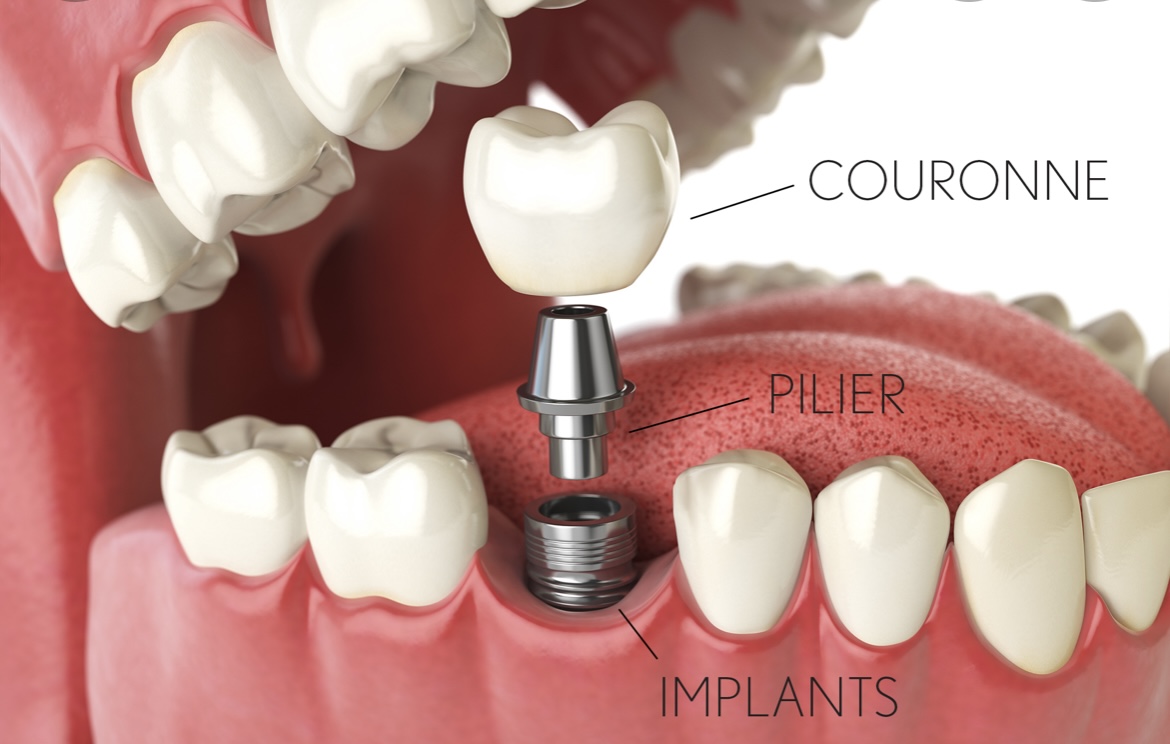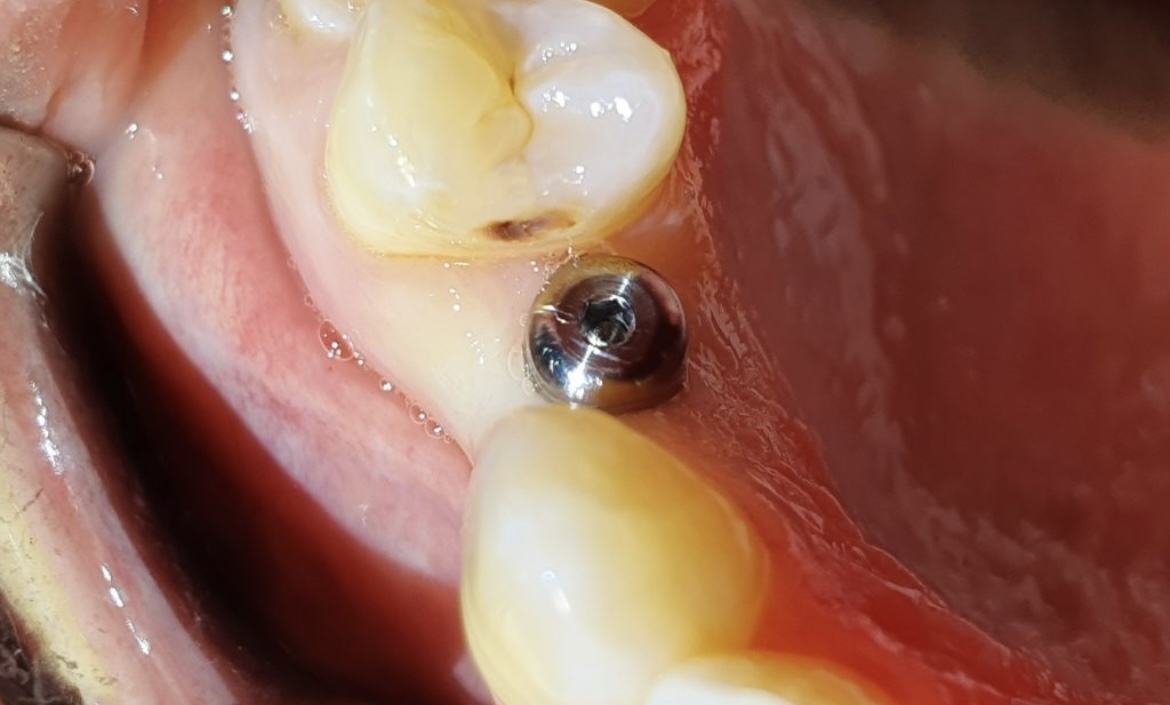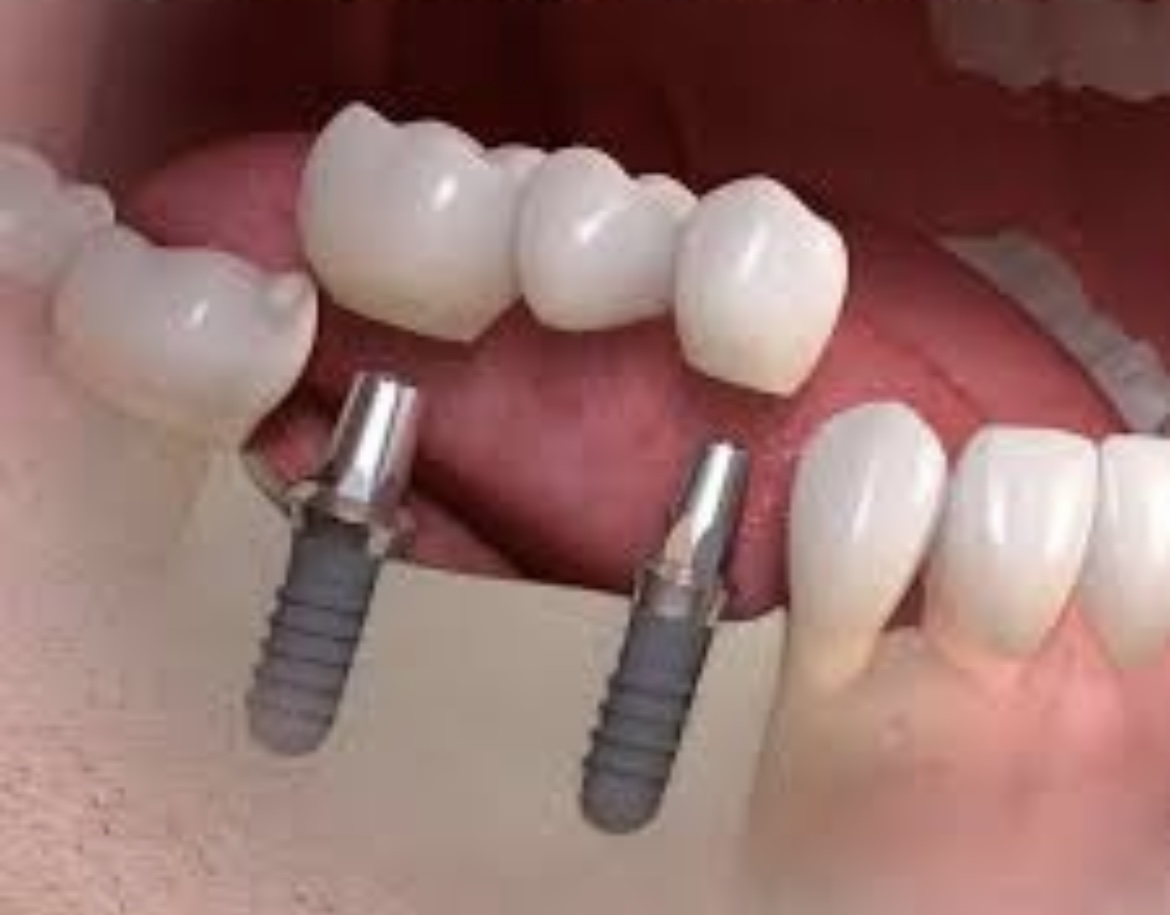Expert dentist and dental clinic in Marrakesh and Morocco

The dental implant is the best solution to imitate nature, because it is the only therapeutic option capable of completely reproducing a tooth from its root to its crown. It also has many advantages over other prosthetic solutions developed so far in dentistry.

The first advantage provided by dental implants is of course to replace the missing tooth(s), thus restoring the smile. They therefore have a major aesthetic role. Implants also play a functional role by restoring mastication, and therefore nutrition. They allow you to eat all the food you want. So you can, for example, bite into an apple with confidence! The comfort felt during chewing is the same with an implant as with a natural tooth. It also preserves the integrity of the jaw.

As true as the lack of physical exercise leads to the atrophy of the muscles of the human body by lack of stimulation, the loss of teeth leads to the progressive resorption of the bone of the jaw. When we chew or swallow, the pressure exerted on the teeth is transmitted to the bone and thus keeps it vital. The placement of an implant makes it possible to restore this mechanical stimulation of the bone formerly exerted by the tooth. Like a natural tooth, it transmits the effort and preserves the integrity of the jaw bone, and preserves the adjacent teeth.

The placement of an implant is often in competition with fixed bridges which are based on natural teeth. However, it has many more advantages, because it is a perfectly autonomous solution. An implant not only replaces a missing tooth, but also indirectly increases the lifespan of neighboring teeth. Indeed, the replacement of a tooth by an implant does not involve any mutilation (size and devitalization) of the adjacent teeth (teeth present on each side of the extracted tooth). These mutilations are generally observed when a bridge fixed on natural teeth is put in place, often lead to complications which shorten the duration of life of the abutment teeth and therefore of the bridges. In addition, a problem (caries, fracture, loosening, abscess, etc.) affecting a tooth adjacent to the implant would be without impact on it; conversely, a problem affecting the implant would have no impact on the adjacent teeth.

The loss of a tooth is not an isolated event and leads irreparably to the loss of other teeth if it is not quickly replaced. Its replacement by an implant preserves the balance of the jaws. When an anterior tooth, that is to say involved in the smile, comes to disappear, the decision of its replacement does not arise! The imperatives of social life and the needs of phonation impose its rapid replacement, on the other hand what happens when you lose a posterior tooth such as a premolar or a molar? One may be tempted to ignore it, or at least to postpone its replacement. This is a mistake! The non-replacement of a tooth poses significant problems, which appear quite quickly, because the teeth are not independent units, they are part of a complex system in balance in which each tooth plays an essential role. When a tooth disappears, the adjacent teeth (present on each side of the extracted tooth) as well as the opposing tooth (present in front of the extracted tooth) move towards the free space. This movement is slow, but begins immediately after extraction. The offset generated affects the harmonious ratio between the teeth of the upper and lower jaws. After a few years, the discrepancy is often such that the adjacent teeth and the opposing tooth must be extracted.
Finally, to be completely exhaustive, it should be noted that overall dental implants are reliable with very high success rates. Of course, the success rate in implantology varies according to different factors related to the patient (state of health, oral hygiene, etc.), the implant system used, the experience of the surgeon, etc. So even if you are implanted young , it is very likely that you will keep your implants all your life.